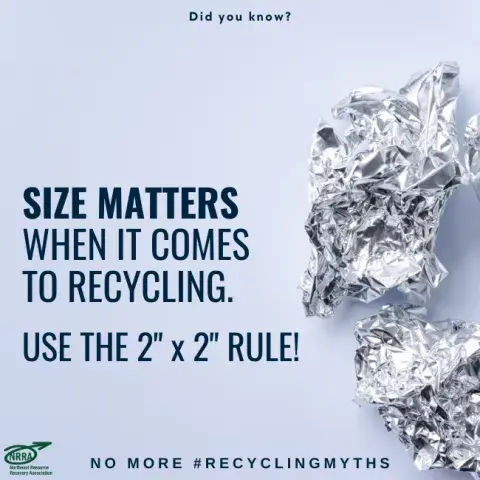
SIZE MATTERS WHEN IT COMES TO RECYCLING
Whether you use your thumb or a Lego guy as your measuring stick, just make sure that anything you put in your recycling bin is AT LEAST 2 inches tall AND wide.
Why does size matter?
Well, at source-separated facilities that bale each individual commodity - such as cardboard or aluminum - it can be nearly impossible to compress a bunch of small items into a heavy cube (can you imagine trying to compress a big rectangle out of shredded paper, for example?! )
Recycling that goes to a single-stream Materials Recovery Facility (MRF) is passed through several mechanical sorters of varying types that are designed to handle "regularly" sized recyclables (like an aluminum can or piece of paper). Items smaller than 2" by 2" are likely to fall out of the system and become trash - or worse, potentially jam up the machinery.
Some recycling facilities will accept some amount of shredded paper in a sealed paper bag - ASK YOUR FACILITY OPERATOR, DO NOT ASSUME!
For small items such as caps and lids, again, check with your recycling facility - some prefer to lose the caps and lids all together, having them go straight to the trash, while other facilities are ok with caps and lids being tightly screwed onto the recyclable and will be separated later on in the recycling process.
Finally, for small items such as scraps of aluminum foil, tap into your inner child and work on making your very own aluminum foil ball! Small pieces can be wrapped into larger pieces, and once it's big enough, it can be safely recycled!
How do you recycle small items in your town? Any other suggestions to add? Let us know!
This material is based upon work supported under a grant by the Rural Utilities Service, United States Department of Agriculture. Any opinions, findings, and conclusions or recommendations expressed in this material are solely the responsibility of the authors and do not necessarily represent the official views of the Rural Utilities Service. Rural Community Assistance Partnership, Inc., is an equal opportunity provider and employer.
